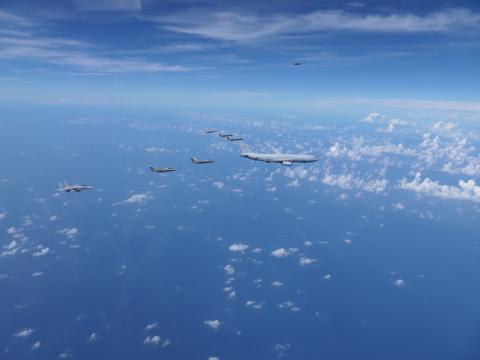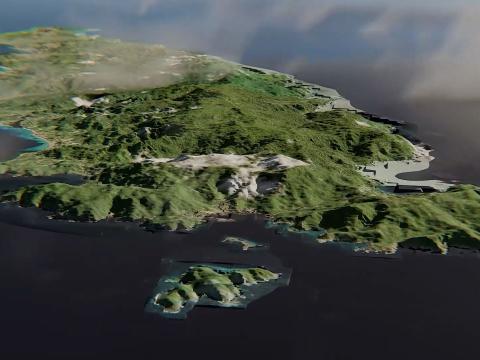Agency Supports Alliance Forces In Southwest Asia
 |
NATO’s Consultation, Command and Control Agency (NC3A) is managing more than 60 projects supporting International Security Assistance Force (ISAF) troops in Afghanistan. These services range from logistics and technical support |
A NATO program supporting alliance forces in
One of the responsibilities of the NATO Consultation, Command and Control Agency (NC3A) is to provide scientific and technological support for deployed alliance forces, such as the International Security Assistance Force (ISAF) in
In addition to supporting forces in
The NC3A provides scientific and technological support to ISAF for C4ISR acquisitions of transformational systems. The acquisition programs operate on six-month to two-year cycles, depending on the procurement strategy chosen by NATO nations. Murphy explains that there is a formal procedure in place, supported by rules and regulations, to ensure that C4ISR procurement is conducted in an unbiased and impartial manner with full accountability to the alliance’s member nations.
The NC3A CRO commitment has two main threads. The first is a scientific program of work that executes across all of the operational lines in the theater. This program can be used to enhance existing C4ISR capabilities such as systems upgrades, provide operational analysis and requirements capture, inform and support staff officers, produce prototypes to help programs under development, and provide additional manpower to accommodate surge, scientific and engineering support efforts in theater. For example, if commanders in the field have a blue-sky idea for a requirement, the CRO can dispatch specialists to visit and then help inform the evolving requirements.
The program typically supports a variety of software packages for intelligence and information-sharing applications, such as the data displays on the decision walls of NATO combined joint operations centers (CJOCs). Murphy notes that the CRO provides roughly a dozen applications for use in ISAF and NATO command centers, and it offers support and training for the software. The ISAF program of work is managed on a yearly basis with governance provided by Allied Commander Operations (ACO) staff at Joint Forces Command Brunssum,
Murphy says that the second thread is NC3A support to operations and states that his main responsibility is supporting the NATO Security Investment Program (NSIP), funded by the NATO nations. NSIP is designed to ensure that urgent operational requirement requests are met to provide NATO with a fast-track capability to put C4ISR capabilities into the field. He adds that during his three-year tenure he has seen the number of projects grow by 25 percent annually. Programs range from supporting intelligence and logistics to planning and communications. The NC3A delivers communications networks in theater, from terrestrial radio networks to satellite communications services and information services. Murphy notes that the future challenge will be to manage the software applications layer and rationalize the decision layers for these new systems as they plug into the NATO communications and networking infrastructure.
Murphy cites some of the highlights of the 62 CRO-supported programs in
The NC3A also is deploying biometrics systems to stop potential suicide bombers from trying to enter coalition facilities. These systems will include iris scanners and forensics kits. In addition, NATO has deployed counter-improvised explosive device (IED) scanners in
 |
The NC3A’s Crisis Response Operations program allows commanders in the field to submit requests for needed operational capabilities. These efforts are screened, vetted and given a fast-track development priority to help ISAF units. |
NATO nations provide governance and leadership, while operational requirements are managed through the ACO and driven at the strategic level by NATO’s Supreme Headquarters Allied Powers Europe (SHAPE), in
Although the operational tempo in the theater has increased, Murphy says that it is business as usual for the NC3A. He adds that the agency is heavily regulated and must follow alliance procurement rules. Formal NATO staffing chains must be followed as well. “There are no shortcuts,” he says, adding that all of the stakeholders and alliance nations strive to work as quickly and flexibly as possible within this structure.
Murphy explains that the CRO operational timeline for project development is set by nations against their agreed procurement strategy. A full international bid usually takes 18 to 24 months. He stresses that the NC3A’s top priority is supporting CRO operations and helping C4ISR stakeholders deliver mission capabilities to ISAF personnel in theater.
WEB RESOURCE
NATO Consultation, Command and Control Agency (NC3A): www.nc3a.nato.int




Comments